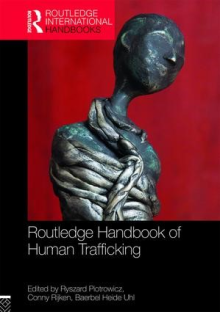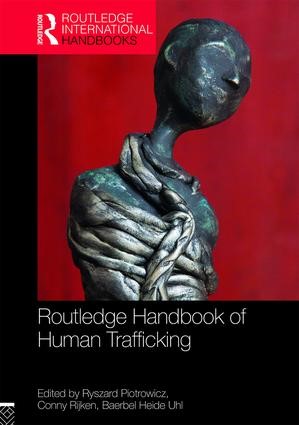“Exploitation of Migrant Workers and Trafficking in Human Beings: A Nexus of the Demand by Employers, Workers and Consumers”: chapter by Natalia Ollus and Anniina Jokinen in “Routledge Handbook of Human Trafficking”
Natalia Ollus and Anniina Jokinen are contributors to the recently published “Routledge Handbook of Human Trafficking" edited by Ryszard Piotrowicz, Conny Rijken, Baerbel Heide Uhl. The chapter named “Exploitation of Migrant Workers and Trafficking in Human Beings: A Nexus of the Demand by Employers, Workers and Consumers" written by Ollus and Jokinen is focusing on the concept of demand in the context of labour exploitation and trafficking in Finland.

The authors analyze the evolution of the concept of demand in treaties such as The Palermo Protocol and the Council of Europe Convention on Action against Trafficking in Human Beings. The latter one emphasizes the need for research on best practices, methods, and strategies for effectively discouraging client demand. The measures addressing demand thus focus especially on consumers of goods and services.
Ollus and Jokinen take an operational approach and align themselves with the conclusion of the Inter-Agency Coordination Group against Trafficking in Persons (ICAT) of the United Nations, which emphasised that rather than focus on definition, there is a need for “consensus about the full set of options that can be taken to effectively discourage demand both directly and indirectly along with a willingness to implement, monitor and evaluate the measures concerned".
Also, the chapter addresses the issue of trafficking for the purpose of forced labour through the concept of the continuum of exploitation. According to them, the continuum is useful in understanding exploitation and trafficking not as single, separate acts, but as a larger context and continuum of acts that range from less severe to more severe forms of exploitation. Ollus and Jokinen also argue that in order for any prevention efforts to be effective, the authorities need to address those multiple violations of labour protection standards, which are more easily detectable and are often precursors to trafficking.
Contextualising the exploitation of migrant workers in Finland is based on 47 interviews with persons in contact with labour exploitation. The data is drawn from previous research carried out at the European Institute for Crime Prevention and Control (HEUNI), focusing on exploring existing forms and awareness of trafficking for forced labour and the exploitation of migrant labour and trafficking in the cleaning and restaurant sectors in Finland. The article argues that in concrete terms, the demand for labour exploitation (of victims of trafficking) comes from intermediaries such as brokers, recruiters, and agents, as well as from unscrupulous employers at the end of the trafficking chain. Also, employees’ demand for work plays a part in this equation: many migrants are willing to take risks in order to secure a better future for themselves and their families.
As outlined by Ollus and Jokinen, since the mid-1990s, in Finland government policies have promoted the introduction of skilled, mobile migrant labour as a solution to the potential negative economic developments caused by the ageing population, national gaps in skills, and decreases in labour supply. Statistics, however, show that migrant workers are over-represented in low-skilled, low-paid sectors. In 2014, 23% of all cleaners and 18% of all workers in the restaurant and catering sector in Finland were migrants. Finnish immigration policies have traditionally focused on controlling immigration, and migration has consequently been framed as a potential threat to the internal security of the country. Government policies have thus portrayed the management of migration both through control measures, especially at the borders, and through controlling the terms and conditions of work of foreign labour.
Research indicates that abuses tend to be concentrated in certain sectors because of the competitive conditions and structures that shape employment in these industries. The focus of efforts to address demand should therefore not only focus on ‘bad employers’, but also look at the labour market as a whole, and the conditions and structures that make exploitation possible. The focus only on extreme cases of exploitation risks turning attention away from everyday exploitation.
Ollus and Jokinen conclude that trafficking in human beings is a manifestation of global inequalities combined with restrictive migration policies. Demand in the context of trafficking – be it by consumers, employers, or workers – is fuelled by globalisation: worldwide differences in standards of living combined with increasing mobility of goods, services, and people. Since demand is also dependent on the context in which it occurs, it is difficult to define and address in clear-cut and precise ways. Much of the demand is also indirectly constructed. Prevention efforts should address trafficking holistically, including employers and businesses, workers and victims, as well as consumers and buyers of services. Since there is no demand without supply, ultimately the two have to be addressed together.
The full chapter as well as other interesting inputs regarding human trafficking are available in the Routledge Handbook of Human Trafficking
